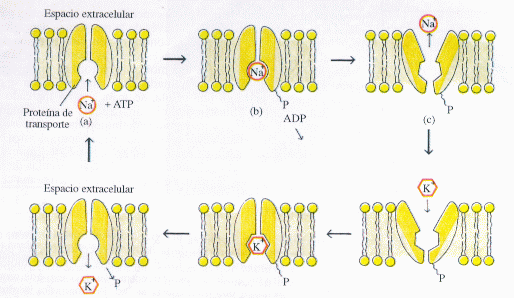Class: 7
Date: march 5 / 10
Item: osmosis
Osmosis
Is when nutrients or ions enter and leave; but the cell don’t spend energy.
The osmosis occurs for the concentration has been equals inside and outside of the cell.
The osmosis occurs in presence to a cell membrane.
Class: 8
Date: 09/03/10
Item: diffusion process and active transport
Diffusion
Is the spontaneous movement of particles from an area of high concentration to and are of low concentration.
Active transport:
Is when the cell spends energy, to transport molecules across the membrane, there are two types of passive transport endocytosis and exocytosis. Is when the cell enters as water and nutrient substances.
Endo= adentro
There are two types of endocytosis
1. Phagocytosis 2. Pinocytosis}
Phagocytosis: is the entry of nutrients through the membrane with energy spent.
Pinocytosis: the entry water into the cell, the membrane invaginates and forms a vacuole that waters enter in to the cell.
Exocytosis: the output of waste outside the cell in this process the cell spends energy.
Class: 6
Date: march: Tuesday 02/10
Item: membrane transport
Membrane transport: it is entry and exit of nutrients thought of the membrane by pores or proteins.
Passive transport:
By extreme conditions when concentrations as the cell must make an effort to enter on or remove ions. there are two states called plasmolysis and turgor.
Plasmolysis: when there is a greater concentration of salts or ions inside the cell and must work to remove them to the point that it loses all its water and plasmolisa and still not finish to balance out the salts.
Turgor: when there are many salts or ions and the cell has to enter them and not stand up and explodes.
Homework:
what is passive transport?
What is concentration gradient?
what is osmosis?
Diffusion is a physical process irreversible, in which material particles are introduced into an environment that was initially absent, increasing the entropy of the joint formed by the scattered particles or solute and the environment in which diffuse or solvent.
Usually diffusion processes are subject to the Fick's law. The permeable membrane may allow passage of particles and solvent always in favor of concentration gradient. The release process requires no energy input, often as a form of cellular exchange.
Homework :
cell wall membrane, plasma membrane cytoplasm cell membrane pores, membrane substances.

S. Jonathan Singer

Garth Nicolson
Membrane Transport: The cell biology of membrane transport is called the set of mechanisms that regulate the passage of solutes, such as ions and small molecules across cell membranes, ie lipid bilayers that have proteins embedded in them.
Mind is a selective permeable barrier, since it prevents the free exchange of materials from one place to another, but at the same time provide a means for communicating a space with another;
Allows the passage or transport of solutes from one side to another cell, it regulates the exchange of substances between the interior and exterior of the cell down a concentration gradient;
Class: 3

 martes, 6 de abril de 2010
martes, 6 de abril de 2010
